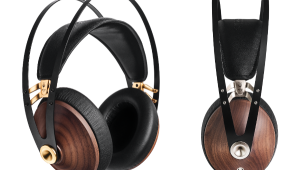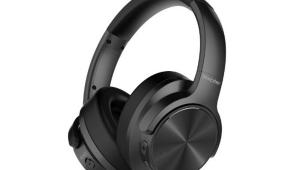Review: Beyerdynamic DTX 501p headphone Page 2
Measurements
To measure the performance of the DTX 501p, I used a G.R.A.S. 43AG ear/cheek simulator, a Clio FW audio analyzer, a laptop computer running TrueRTA software with an M-Audio MobilePre USB audio interface, and the Musical Fidelity V-Can headphone amplifier. Measurements were calibrated for ear reference point (ERP), roughly the point in space where your palm intersects with the axis of your ear canal when you press your hand against your ear. I experimented with the position of the earpads by moving them around slightly on the ear/cheek simulator, and settled on the positions that gave the most representative results and the best bass response. Unlike most on-ear headphones, the DTX 501p gave good measured bass response without requiring me to use the 43AG’s clamping mechanism.
The DTX 501p’s frequency response looks essentially flat, although bass is a little weaker than usual and treble is a tad stronger than usual. Adding 70 ohms output impedance to the V-Can’s 5-ohm output impedance to simulate the effects of using a typical low-quality headphone amp has almost no effect, just -1 dB at 10 Hz.
Total harmonic distortion (THD) at 100 dBA is low above 100 Hz, and rises to a still relatively low 4% at 20 Hz. Isolation is pretty good for a compact on-ear, reaching -15 dB at 1 kHz and running about -20 dB at most higher frequencies.
Measured impedance averages 38 ohms. Average sensitivity with a 1 mW signal at 32 ohms rated impedance is 103.3 dB from 300 Hz to 6 kHz. So the DTX 501p is easily driveable with any smartphone, laptop, etc.
Bottom line
If you want a compact, inexpensive headphone that delivers real audiophile-quality sound, buy this one.
- Log in or register to post comments




































































